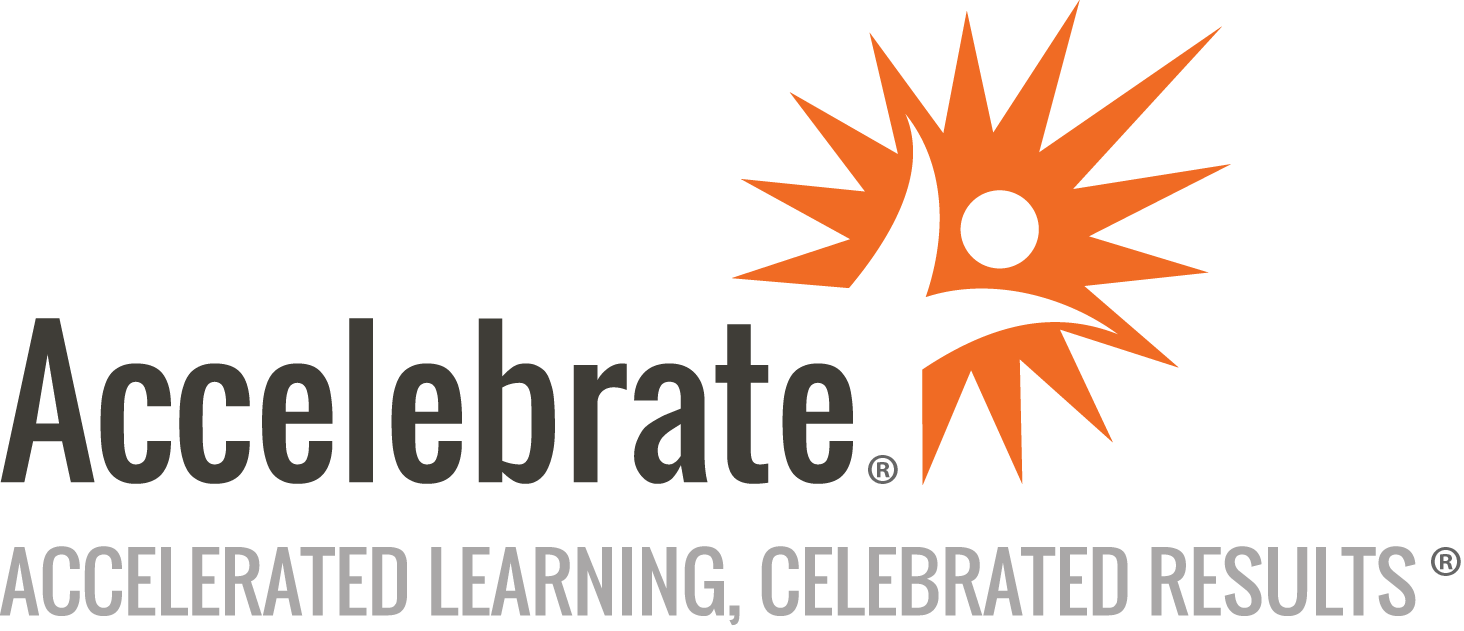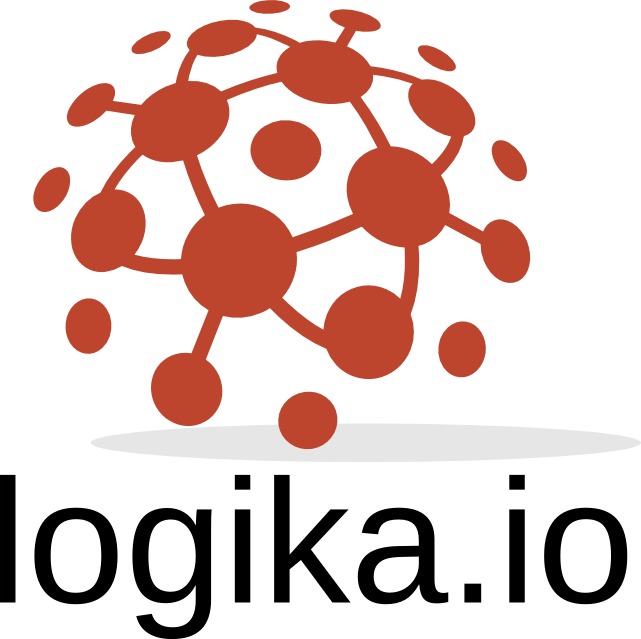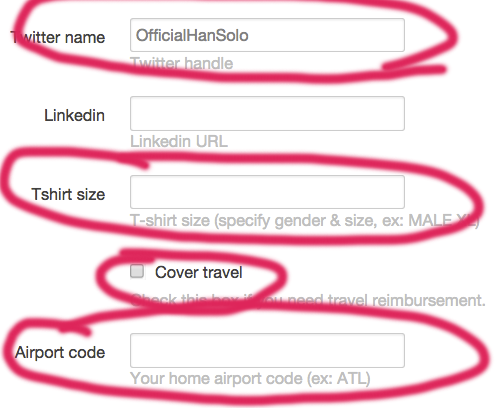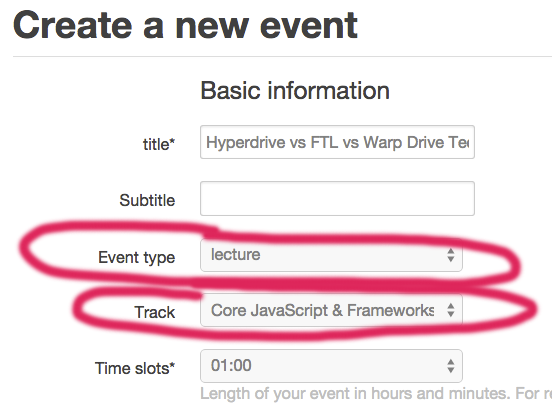Code Of Conduct
DataSciCon.Tech is dedicated to providing an outstanding conference experience for all attendees, speakers, sponsors, volunteers and organizers (DataSciCon.Tech participants) regardless of gender, sexual orientation, disability, physical appearance,
body size, race, religion, financial status, hair color (or hair amount), platform preference, or text editor of choice. We do not tolerate harassment of DataSciCon.Tech participants in any form. Please treat your fellow DataSciCon.Tech
participants with respect, regardless of the context you’re interacting with them.
Harassment is not appropriate for any conference venue. We expect all DataSciCon.Tech participants to follow the Code of Conduct during the conference. This includes conference-related social events at off-site locations, and in related online
communities and social media. Participants asked to stop any harassing behavior are expected to comply immediately. Conference participants violating this Code of Conduct may be expelled from the conference without a refund, and/or banned
from future DataSciCon.Tech events, at the discretion of DataSciCon.Tech Examples of harassment include offensive comments, verbal threats or demands, sexualized images in public spaces, intimidation, stalking, harassing photography or
recording, sustained disruption of sessions or events, and unwelcome physical contact or sexual attention. Speaker presentations fall under this category and should not use images or examples that would violate the code of conduct. DataSciCon.Tech
participants must remember that DataSciCon.Tech organizers and volunteers are not trained conflict resolution specialists, nor are they security or law enforcement. DataSciCon.Tech organizers and volunteers will immediately escalate issues
around safety, violence, or similar situations to Cobb Galleria staff or law enforcement. For the protection of DataSciCon.Tech participants, DataSciCon.Tech will never put its organizers or volunteers in the position of trying to assess
whether or not an incident merits escalation. If there is any doubt, we will escalate incidents to the appropriate agency immediately. Incident Resolution • All DataSciCon.Tech participants agree to treat each other with respect, regardless
of whether you are in a session room or at the Cobb Galleria facilities. • Simple disagreements should be resolved between the individuals concerned. • Harassment or more serious issues should be escalated to a DataSciCon.Tech organizer
or volunteer. That person will immediately contact a DataSciCon.Tech Board member who has the responsibility to assist in resolution. • DataSciCon.Tech participants suffering outright assault or extreme harassment should contact the Cobb
Galleria staff immediately, or a DataSciCon.Tech organizer if they're nearby. That person will immediately escalate the issue to the venue staff or law enforcement as appropriate.
Introduction to Machine Learning with Python and TensorFlow
In this workshop, we will take a hands-on approach to machine learning by exploring some real world datasets. First, we'll cover how to load and transform data in Python using Pandas. We'll walk through data preparation, where attendees will learn first-hand how to manipulate, clean, aggregate, and reshape raw data. We'll show several statistical learning techniques, such as linear regression, k-means, and PCA using scikit-learn. Finally we will explore how to set up and train more sophisticated neural networks for image recognition on the cloud using TensorFlow. Attendees will learn the fundamentals of data science and machine learning through short code samples and interactive learning.
Brian Sletten has experience spanning defense, finance and commercial domains with security consulting, network matrix switch controls, 3D simulation/visualization, Grid Computing, P2P and Semantic Web-based systems.
Tableau Hands-on Workshop
This hands-on workshop will cover everything from fundamentals of data visualization to advanced customizations to leveraging Tableau in web applications using its JavaScript API. Topics covered include functions, parameters, maps, best practices, actions, and much more! We conclude the day by providing a dataset and having attendees build their own dashboards using the knowledge they’ve gained, with the instructor circulating to provide one-on-one coaching.
Tim works with companies to help better visualize, analyze and take action on their data.
Whether it's dashboard development, predictive analytics or analyst training, Tim loves helping companies leverage their data to establish industry dominance.
When not working on client projects, Tim is an avid mountain biker who enjoys spending most of his free time outdoors.
Data Science with R Workshop
Join this workshop on DataScience with R to gain the skills you need to get started with data science, including statistical and numerical methods and R. You will also learn about visualising data, big data environments and how to interact with linked data in R. Upon completion of this DataScience workshop, you will have an understanding of relevant languages and tools.
As there is a rush to hire data scientists these days, there is a coincident rush to update resumes to include the term "Data Scientist". Unfortunately, like most types of science, it is less a single topic and more a multi-disciplinary way of thinking, inquiring and communicating. Individuals do not need to know everything about the field, but teams should be composed of individuals who collectively do.
Attending this workshop won't make you a data scientist overnight, but you will learn to be one in time and will have a study plan for moving forward in this field.
Jonathan works with RStudio's financial services customers. He studied International Relations as an undergraduate at Harvard, worked in finance at JP Morgan and then did graduate work in Political Economy at Emory University before joining RStudio.
Keynote: Watson – From Insight to Inspiration The evolving role of computing in our lives
Organizations now recognize the critical value of data at almost every business level. This data-first mindset has vastly increased the demand for developers and data scientists. Generally swimming in similar waters, changing currents bring the two groups together. There’s commonality between developers and data scientists: at the heart of app development are core analytics functions that data scientists have managed and applied in programming models. Traditionally, this workflow has been somewhat of a relay, with data scientists creating models to translate raw data, and passing results to the development team, which again translates the data for its app. It’s a working approach, but to build with data at a competitive pace, new tools and methods must be adopted.
Rob High is the Vice President and Chief Technology Officer for IBM Watson. High leads the IBM team responsible for bringing cognitive computing to the world, supporting the development of deep natural language processing and other cognitive computing capabilities in the areas of speech, language, vision, and reasoning. Under his leadership, Watson is ushering in a new era in computing in which systems are able to interact in natural language, analyze large volumes of unstructured data, respond to complex questions with evidence-based answers, and discover new actionable patterns and insights. High is recognized as a global technical leader and was named an IBM Fellow in 2008 for his pioneering work in the field of SOA and for his leadership on WebSphere
Unleashing the Power of Data with Network Acceleration - Bringing Together Big Data and Deep Learning
An autonomous vehicle creates 400GB of data – each day. For Deep Learning to leverage the deluge of data, it must run on infrastructure that accelerates the movement of information. In this session, we’ll discuss these networking technologies, and how they fit in a Deep Learning and Big Data ecosystem of TensorFlow, Spark, NVMe over Fabrics, and GPUDirect.
Bill Webb has worked in networking almost his entire career, including at large companies, such as Nortel and Ciena, and at start-ups. He worked with modern scale-out data center technology at Concurrent, including Ceph and media streaming. Bill currently is a technical evangelist for Mellanox’s Ethernet Switch products, promoting hardware accelerated machine learning, analytics, cloud, and storage networking.
Divide, Distribute and Conquer: Stream v. Batch
Data is flowing everywhere around us, from phones, credit cards, sensor-equipped buildings, vending machines, thermostats, trains, buses, planes, posts to social media, digital pictures and video and so on.
Viktor Gamov is a Solution Architect at Confluent, the company behind the popular Apache Kafka streaming platform.
GOAI: GPU-Accelerated Data Science
The GPU Open Analytics Initiative, GOAI, is accelerating data science like never before. CPUs are not improving at the same rate as networking and storage, and leveraging GPUs, data scientist can analyze more data than ever, with less hardware. Learn more about how GPU are accelerating data science (not just Deep Learning), and how to get started.
Joshua Patterson is the Director of Applied Solutions Engineering at NVIDIA and a former White House Presidential Innovation Fellow. Prior to NVIDIA, Josh worked with leading experts across the public and private sectors and academia to build a next-generation cyber defense platform. His current passions are graph analytics, machine learning, and GPU data acceleration. Josh also loves storytelling with data, and creating interactive data visualizations.
Predictive Policing & Machine Learning (split into 2 x 1 hour slots)
Machine Learning (ML) is a type of Artificial Intelligence (AI) that provides computers with the ability to learn and make predictions. Machine Learning can be applied across several disciplines in order to make predictions. One such disciple, Predictive Policing, uses Machine Learning to predict the likelihood of crime. This talk introduces S. A. M. (Suspicious Activity Monitor), a Predictive Policing, Machine Learning program, that predicts crime based on a given set of circumstances. The "secrets" and technologies to bringing a Machine Learning program, like S. A. M., to life are explained and demonstrated during this talk.
Kesha Williams is a software engineer with over 20 years’ experience specializing in web application development. In addition to being a software engineer with Chick-fil-A, she trains and mentors thousands of software developers in the US, Europe, and Asia while teaching at the University of California. She's authored courses on Java, Machine Learning (ML), Artificial Intelligence (AI), and Augmented Reality (AR). She most recently won the Think Different Innovation Award from Chick-fil-A for her work on investigating how emerging technologies like Artificial Intelligence (AI), Augmented Reality (AR), Computer Vision/Facial Recognition, and the Internet of Things (IOT) can enhance restaurant operations and customer experiences. In her spare time, she leads the Georgia chapter of Technovation, serves as a mentor with the New York Academy of Sciences, and conducts free Hour of Code sessions for children at her local library.
Predictive Policing & Machine Learning Part II
Machine Learning (ML) is a type of Artificial Intelligence (AI) that provides computers with the ability to learn and make predictions. Machine Learning can be applied across several disciplines in order to make predictions. One such disciple, Predictive Policing, uses Machine Learning to predict the likelihood of crime. This talk introduces S. A. M. (Suspicious Activity Monitor), a Predictive Policing, Machine Learning program, that predicts crime based on a given set of circumstances. The "secrets" and technologies to bringing a Machine Learning program, like S. A. M., to life are explained and demonstrated during this talk.
Kesha Williams is a software engineer with over 20 years’ experience specializing in web application development. In addition to being a software engineer with Chick-fil-A, she trains and mentors thousands of software developers in the US, Europe, and Asia while teaching at the University of California. She's authored courses on Java, Machine Learning (ML), Artificial Intelligence (AI), and Augmented Reality (AR). She most recently won the Think Different Innovation Award from Chick-fil-A for her work on investigating how emerging technologies like Artificial Intelligence (AI), Augmented Reality (AR), Computer Vision/Facial Recognition, and the Internet of Things (IOT) can enhance restaurant operations and customer experiences. In her spare time, she leads the Georgia chapter of Technovation, serves as a mentor with the New York Academy of Sciences, and conducts free Hour of Code sessions for children at her local library.
Jarvis: The Next Generation of AI Engine for Robot World
This talk will show live demo on Project Jarvis’s deep learning and big data analytical power, as the brain of Leo Robot, to ignite robots the intelligence to change our present and future life. In addition, we will present how we blend the AI, deep learning, big data analytics, and Cloud technologies to empower deep insights in healthcare, banking, and public services. Given all the real use cases, we demonstrate how Jarvis has become the next generation of AI engine, and embark a new journey to applied data science.
Target Audience Identification by Pyspark-Based Machine-Learning Model Predictions
Target Audience Identification is a vital process by businesses to successfully create engaging products and services that suffice the expectations of their consumers and yield revenue. Predictive Analytics, particularly including Machine-Learning-Based Models, is an emerging technology in the Madtech (marketing, advertising, and technology) marketplace with growing support by executives that it can maximize the extraction of both value and insights from data. While many organizations with such executive-level support often implement predictive models in “off-production” development environments on a “small scale” (e.g., small sample datasets) via their Data Science personnel or/and third-party software tools, the Consumer Products and Services landscape beckons productionalized Big Data Predictive Models with ideally first-party Data Science and Analytics. This talk presents the design, application, and preliminary results of a productionalized large-scale “Machine-Learning-Based Predictive Modeling Framework” to identify a Target Audience among ~50 Million monthly unique The Weather Channel app users. The preliminary results include a juxtaposition of cross-validated classifier performances of various machine learners (e.g., Decision Tree, Random Forest, Support Vector Machine) on the same first-party “Mobile App Users” behavioral dataset. The design, which parallels a pattern classification pipeline, presently uses Pyspark components and an AWS EMR environment and considers A:B Testing (aka Hypothesis-Driven Consumer Product:Market:Ad Experimentation) a key subsequent stage to both externally validate models and ultimately inform business actions.
Dr. Otis Smart is a Principal Data Scientist at IBM The Weather Company who develops machine-learning-based predictive models and insights from Big Data for Audience Categorization, Targeting, and Engagement projects and provides consult on various additional projects. Previously, he developed predictive models [a] from Twitter data for a social media marketing SaaS analytics platform by startup Insightpool + [b] from in-vivo brain data (e.g., electrophysiology, neurophysiology, neurostimulation, implantable medical devices) for human and animal studies of neurological disorders (e.g., epilepsy, depression, parkinson's disease) at Emory University. Also, he previously conducted research in the Intelligent Control Systems Laboratory at Georgia Tech, the Psychophysiology Laboratory at NASA Ames Research Center, and Clemson University as well as radio-frequency engineer training at BellSouth Mobility. He earned BS (2001), MS (2002), and PhD (2007) degrees in Electrical Engineering from the Georgia Institute of Technology and a BS (2001) degree in General Science from Morehouse College.
Quantum Computing Exposed part 1: Why Schrodinger's Cat was Grumpy
In this session, James Weaver will give a gentle introduction to quantum computing, including: A brief history of quantum computers, visualizing superpositions, composing quantum algorithms with quantum gates, understanding Shor’s potentially RSA encryption busting algorithm, and current status of quantum computers.
James Weaver is a Java developer, author, and speaker with a passion for helping Java to be increasingly leveraged in cloud-native and machine learning applications. He is a Java Champion, and a JavaOne Rockstar. James has written books including Inside Java, Beginning J2EE, the Pro JavaFX series, and Java with Raspberry Pi. As an Pivotal Developer Advocate, James speaks internationally at software technology conferences about Java and Cloud Native development. James tweets as @JavaFXpert, blogs at http://JavaFXpert.com and http://CulturedEar.com and may be reached at jweaver [at] pivotal.io











